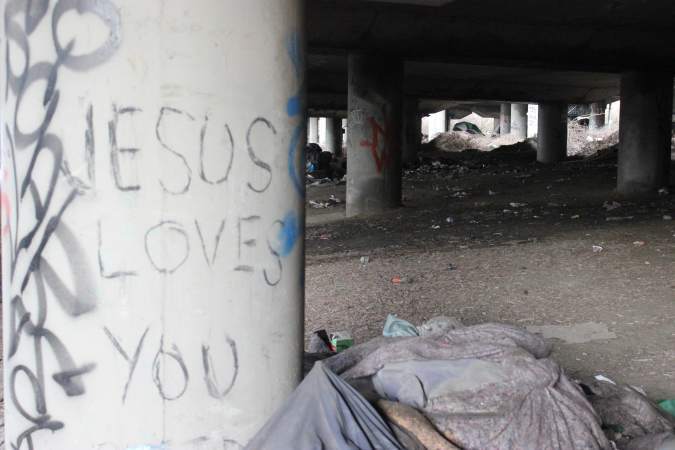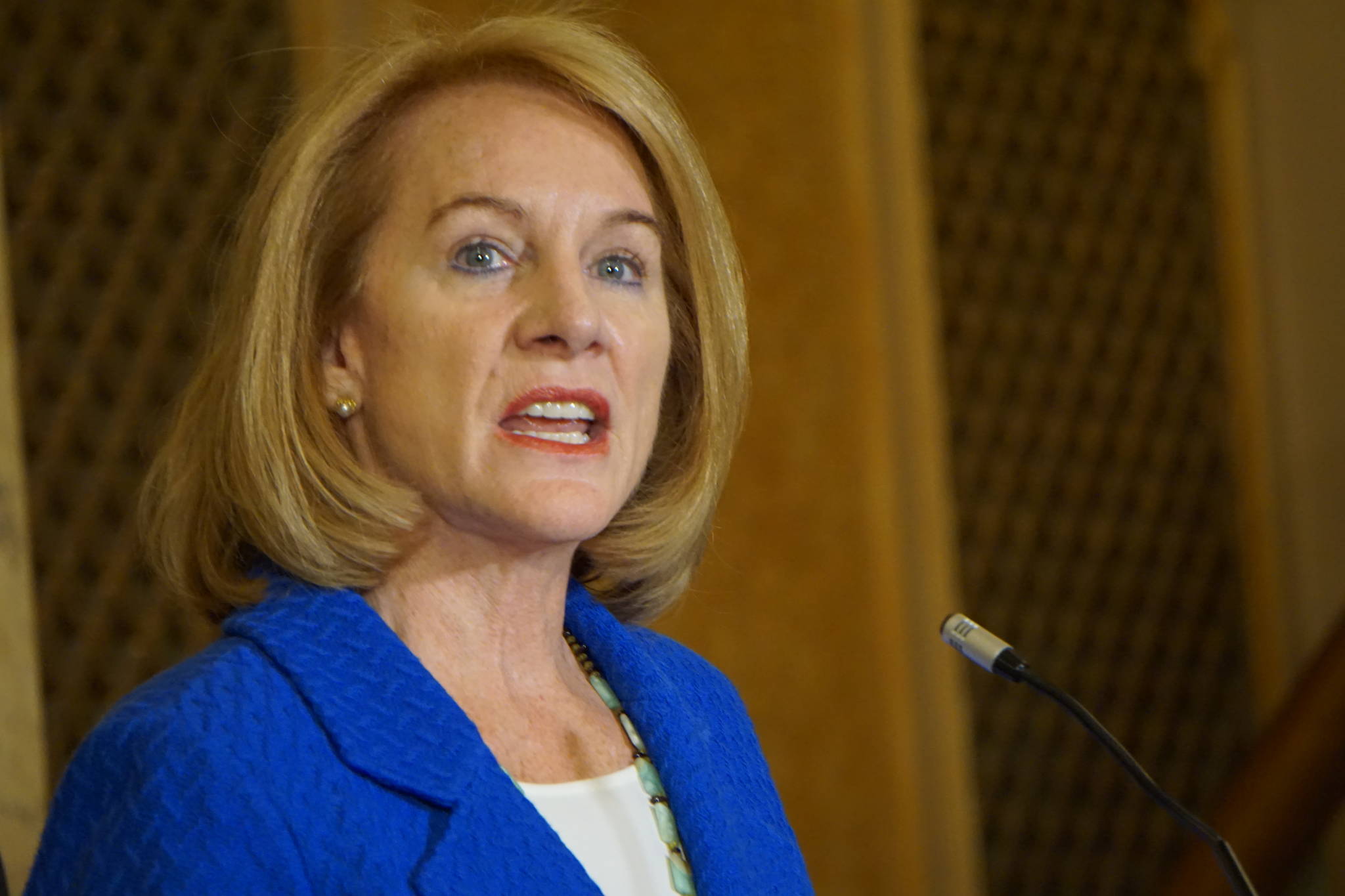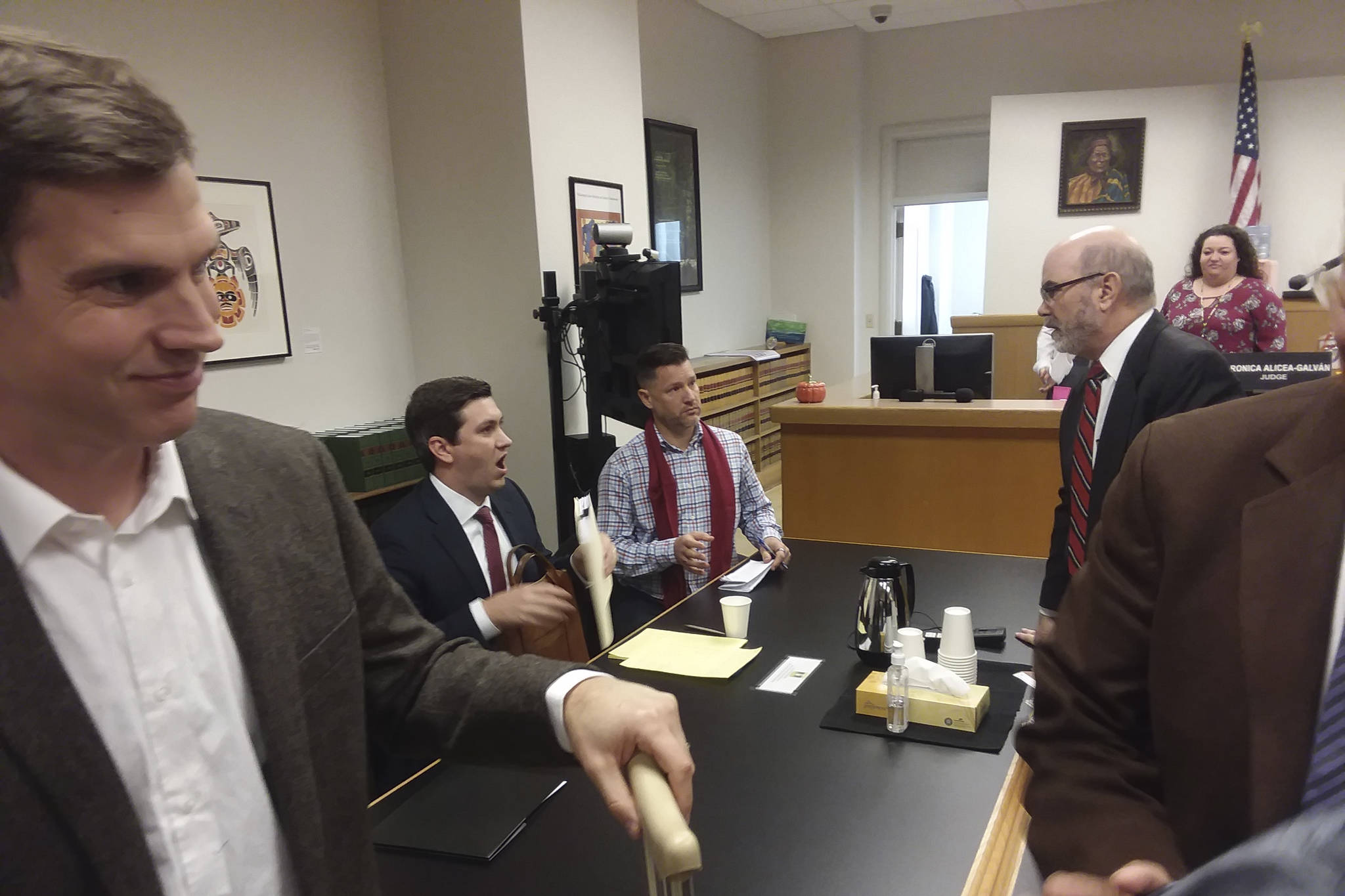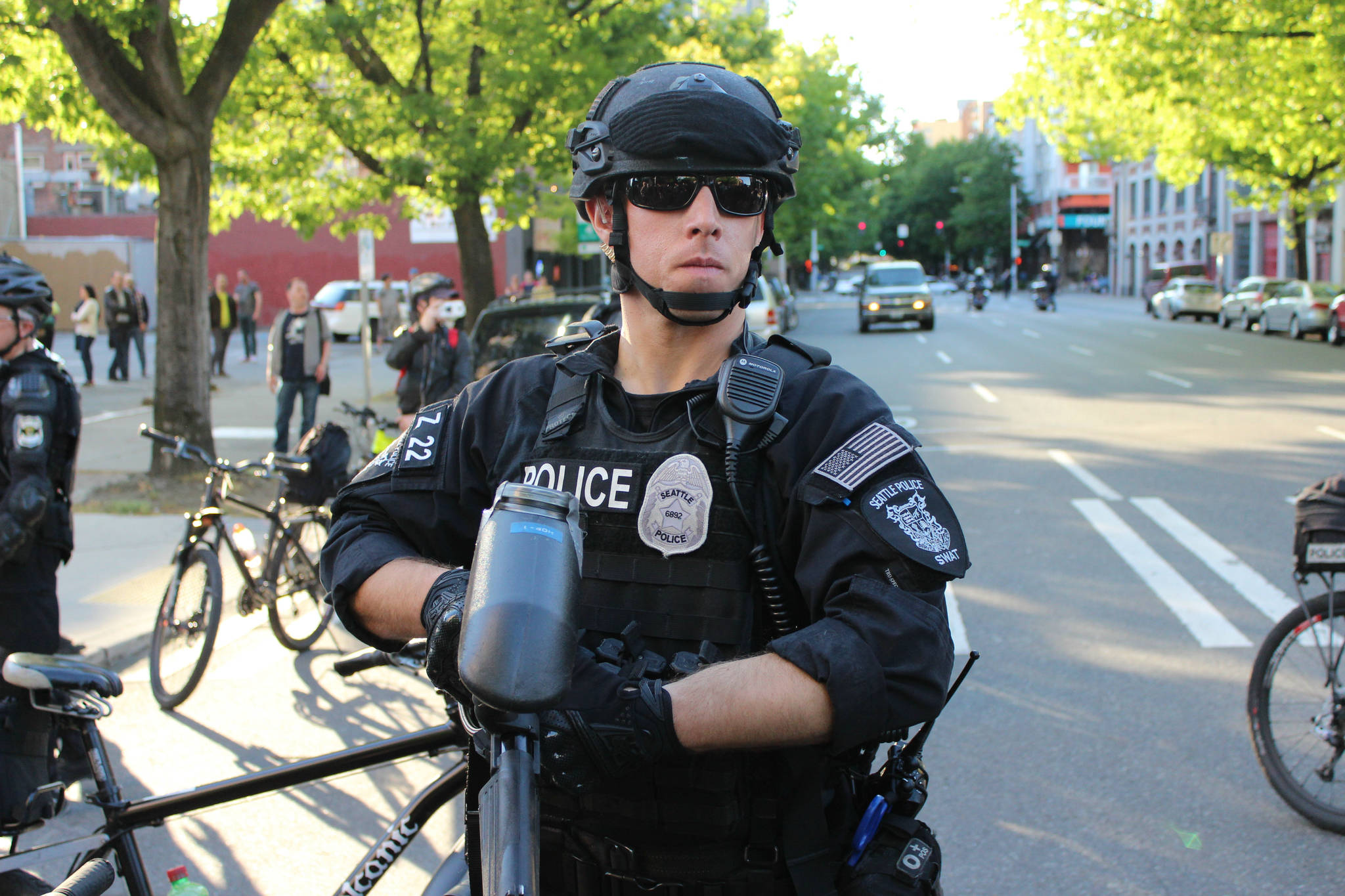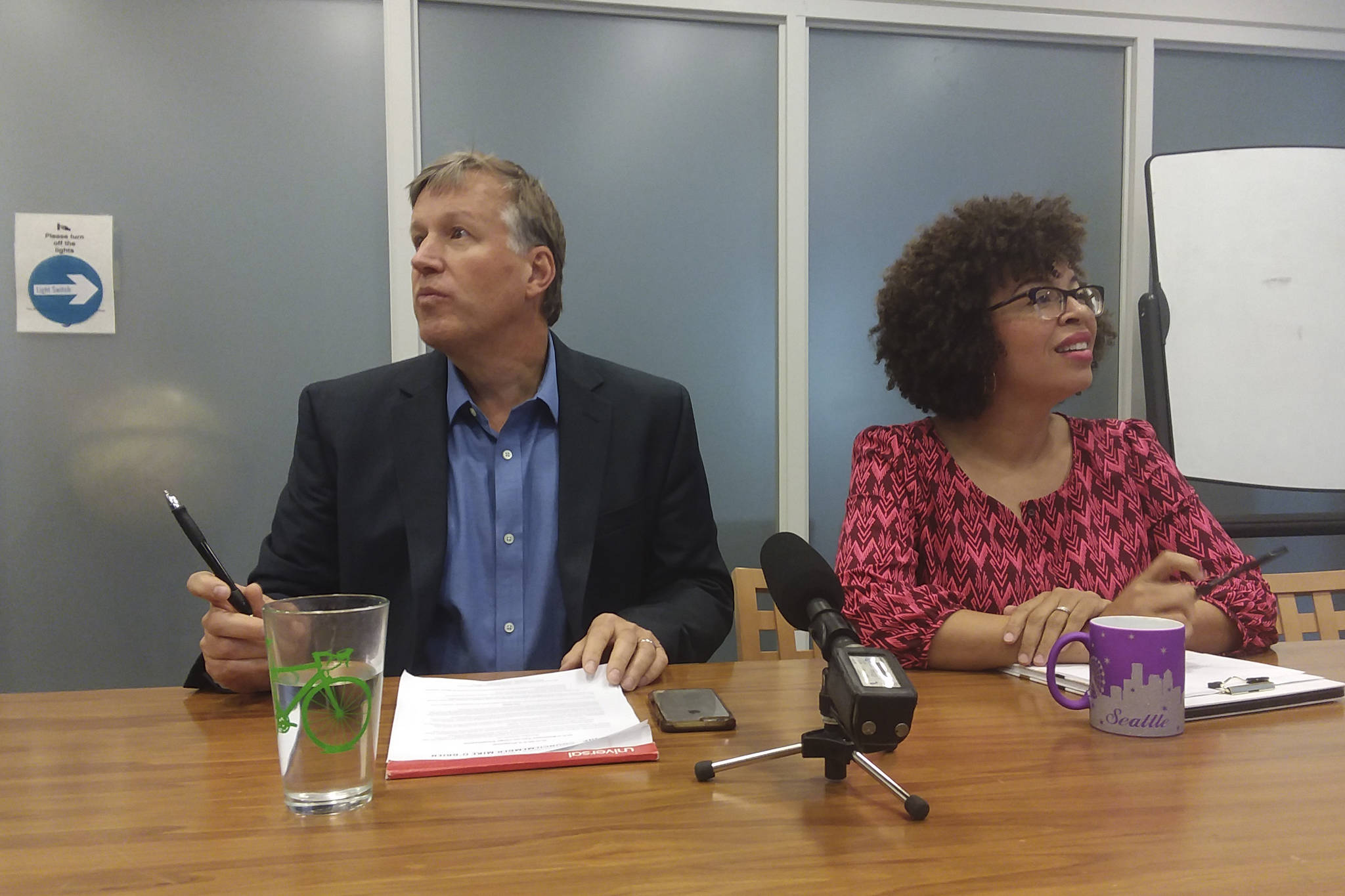The Jungle, a stretch of homeless encampments beneath and around the I-5 freeway, had long been lamented as a public safety nightmare, a hellish underworld of violence and agony.
City officials argued that shutting it down it was the only humane thing to do. The mayor’s deputy chief of staff said that leaving the scattered archipelago of shantytowns intact would be to “ignore the health of people who live nearby, to ignore the chance of fire, rodents, waste.” The Seattle Times called for “the filthy, trash-infested encampment known as ‘The Jungle’” to be “eradicated.”
The city sent outreach workers into the Jungle to offer shelter and assistance to anyone who wanted it. The population of the Jungle measured in the triple digits. No one accepted.
The day arrived. The bright green undergrowth of the forest contrasted under the sunlight against the stoic gray concrete. There were police, and workers in orange vests. Most of the campers had already left, but many told reporters that they’d come back as soon as the ruckus was over. Seattle police arrested several protesters who objected to evicting the homeless. Work crews clambered in over the hilly, uneven ground, cleaning out accumulated refuse and makeshift homes.
The year was 1994.
Or, with the details shuffled a bit, 1998. Or 2003. (H/t to Seattle Times archives.)
And now, in 2016, the city’s executive branch is doing it again. “Through a combination of outreach and services…we hope to transition those currently living in tents under the freeway into stable shelter,” announced Mayor Ed Murray in a press release on Tuesday.
According to that release, the city is counting on Union Gospel Mission (UGM) to persuade each of the Jungle’s hundreds of residents to accept shelter and services.
If, within a few weeks, UGM’s outreach succeeds in moving most or all Jungle residents into shelter, it will be unprecedented. Between November and January, professionally trained outreach workers contracted by the city were not been able to convince most residents of unpermitted homeless encampments that were getting cleared to accept shelter and services—the campers preferred to move somewhere else. The Mayor’s press release does not say what will happen to campers who stay after UGM does its outreach. We’ve got a line out to the city.
Longtime homeless activists say the sweep will just compound the problem it purports to solve. “We have opted for this quick fix – taking actions that have made the lives of people even more miserable,” John Fox of the Seattle Displacement Coalition told the Times in 1994. His view hasn’t changed in 22 years: “This is a friggin’ waste of time and resource,” he says. “You would have to build a Berlin Wall around the entire [greenbelt]…to keep people out of there. And an army to patrol it.”
“This is a quick and dirty operation that’s going to create misery,” Real Change founder Tim Harris told KUOW yesterday. “This is not a human services strategy. This is a displacement strategy.”
UGM cannot receive city funds because it has religious requirements for employees, but the faith-based charity will have access to $100,000 in “flexible funds” and will be able to place campers in “publicly funded shelter space.” Katherine Jolly, spokesperson for the Seattle Human Services Department, confirmed that the city does not know which publicly funded shelter spaces will be available when, though the city-permitted encampment at Othello is one likely source. “Typically outreach workers reach out to shelters on the days they go out to determine which shelters have capacity since it changes daily,” she says.
We called several Seattle-area homeless shelters to ask how many unused beds they’ve had in recent nights. The Bread of Life shelter, which offers close to 100 beds in Pioneer Square, is about 90 to 95 percent full each night, according to program director Leonard Mayo. The Sea-Sha Inn, a men’s hostel run by the Seattle Indian Center, is full nightly. So are all 400-ish of the beds in shelters run by Mary’s Place, according to spokesperson Linda Mitchell. And also the hundreds of emergency shelter beds at Compass Housing Alliance, according to spokesperson Suzanne Sullivan. Catholic Community Services’ St. Martin’s shelter in SoDo has about 200 beds, and according to spokesperson Flo Beaumon, it turns away about 15 people a night.
“I have a hard time imagining that even the entire Seattle shelter system” could handle the entire population of the Jungle, she says.
Torie Rynning, UGM spokesperson, says that the group, which has religious requirements for staff but not for clients, has enough room to take in every person currently living in the Jungle. UGM reckons that if it needs to, it can fit about 90 more people into its men’s shelter, about 100 into a gym, about 50 into parking lot tent cities, and about 50 by reopening its winter shelters.
But, Rynning says, it probably won’t come to that, because it’s unlikely to convince most or all of the Jungle’s residents to join its shelters. “We are not expecting that anywhere close to [all] will accept an offer of shelter beds,” she says, “although, that would be wonderful!”
As in past sweeps of the Jungle, it’s not clear where campers who don’t want to move into regulated shelter will go.
